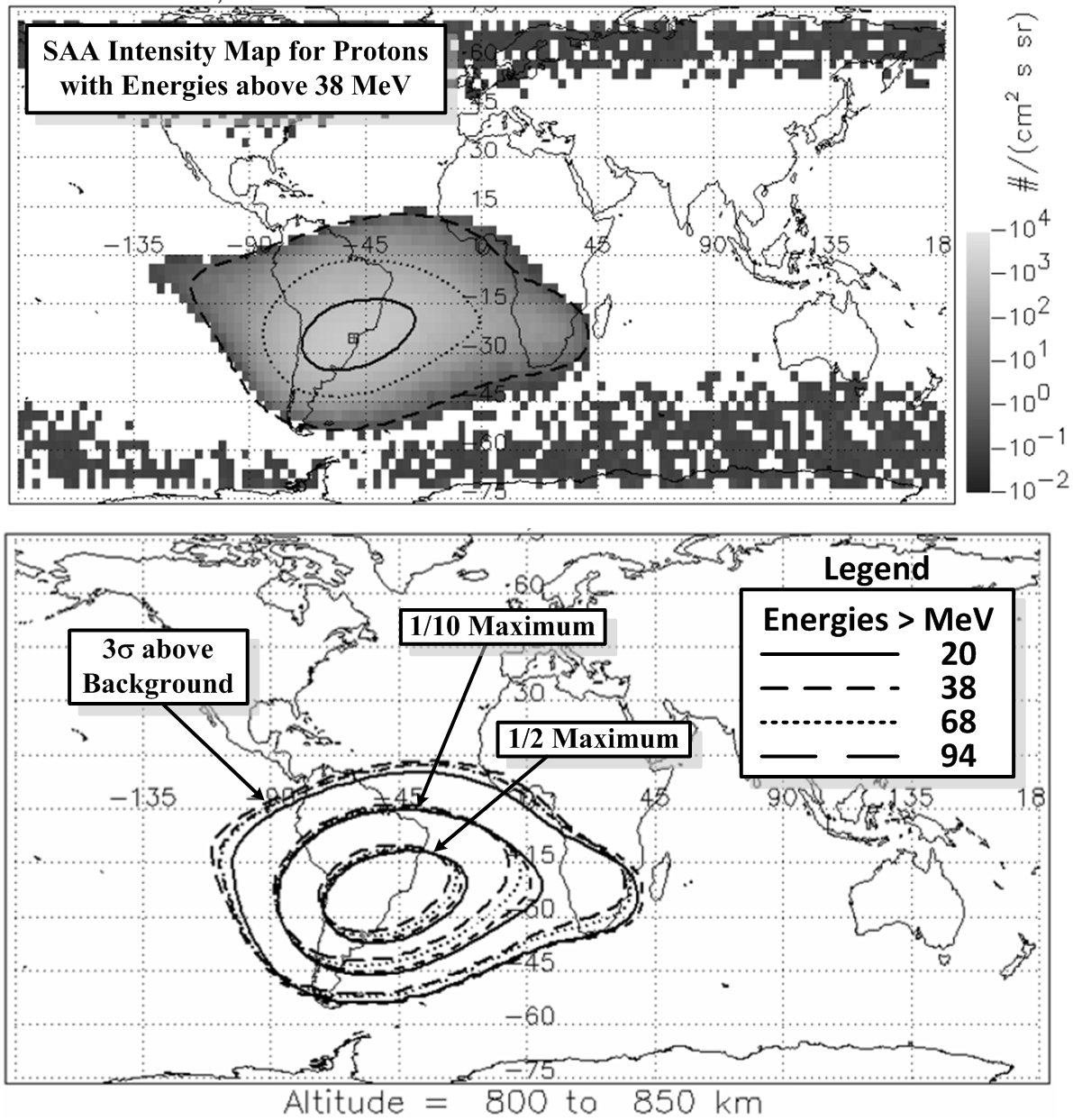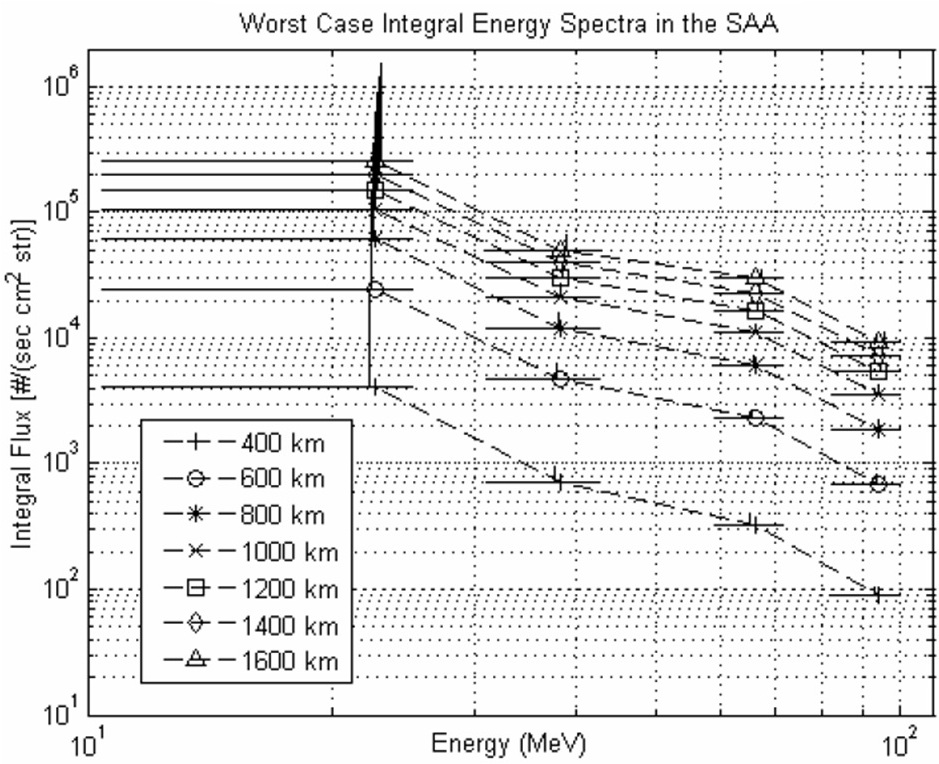Geiger Müller Design Notes
2. LEO Environment
There is a considerable amount of literature on the ionizing radiation content of the South Atlantic Anomaly, SAA. In short, the SAA is fed by the inner van Allen Belt which contains mainly protons and electron ranging in every from 10 — 100 MeV and 0.1 — 10 MeV, respectively. In the former range there are also neutrons and alphas and in the later range there are also positrons. Protons account for the most significant portion of the particle flux, followed by electrons. Figure 1.1 shows an example of a proton map around our CubeSat's expected orbital altitude.
 |
| Figure 1.1: Proton Map of the SAA [1]. |
The longest transit time across the SAA for Space Concordia's ConSat1 CubeSat is 18 minutes. As can been seen from the figure the radiation peaks near the center of the anomaly. Figure 1.2 shows the worst case fluxes that would be expect near the center of the SAA.
 |
| Figure 1.2: Maximal Proton Flux of the SAA [1]. |
The proton flux is highly correlated with solar activity. The radiation maps can be used to obtain upper limits on the expected flux as our satellite passes through the anomaly.
References:
[1] G. P. Ginet, D. Madden, B. K. Dichter and D. H. Brautigam, Energetic Proton Maps for the South Atlantic Anomaly, Radiation Effects Data Workshop, IEEE, July (2007).
___________Last Updated: 8:14 PM EST Oct. 30th, 2014